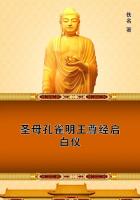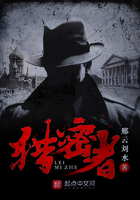The subject of our present sketch occupies quite a distinct position in scientific history. Unlike many others who have risen by their scientific discoveries from obscurity to fame, the great Earl of Rosse was himself born in the purple. His father, who, under the title of Sir Lawrence Parsons, had occupied a distinguished position in the Irish Parliament, succeeded on the death of his father to the Earldom which had been recently created. The subject of our present memoir was, therefore, the third of the Earls of Rosse, and he was born in York on June 17, 1800. Prior to his father's death in 1841, he was known as Lord Oxmantown.
The University education of the illustrious astronomer was begun in Dublin and completed at Oxford. We do not hear in his case of any very remarkable University career. Lord Rosse was, however, a diligent student, and obtained a first-class in mathematics. He always took a great deal of interest in social questions, and was a profound student of political economy. He had a seat in the House of Commons, as member for King's County, from 1821 to 1834, his ancestral estate being situated in this part of Ireland.
[PLATE: THE EARL OF ROSSE.]
Lord Rosse was endowed by nature with a special taste for mechanical pursuits. Not only had he the qualifications of a scientific engineer, but he had the manual dexterity which qualified him personally to carry out many practical arts. Lord Rosse was, in fact, a skilful mechanic, an experienced founder, and an ingenious optician. His acquaintances were largely among those who were interested in mechanical pursuits, and it was his delight to visit the works or engineering establishments where refined processes in the arts were being carried on. It has often been stated--and as Ihave been told by members of his family, truly stated--that on one occasion, after he had been shown over some large works in the north of England, the proprietor bluntly said that he was greatly in want of a foreman, and would indeed be pleased if his visitor, who had evinced such extraordinary capacity for mechanical operations, would accept the post. Lord Rosse produced his card, and gently explained that he was not exactly the right man, but he appreciated the compliment, and this led to a pleasant dinner, and was the basis of a long friendship.
I remember on one occasion hearing Lord Rosse explain how it was that he came to devote his attention to astronomy. It appears that when he found himself in the possession of leisure and of means, he deliberately cast around to think how that means and that leisure could be most usefully employed. Nor was it surprising that he should search for a direction which would offer special scope for his mechanical tastes. He came to the conclusion that the building of great telescopes was an art which had received no substantial advance since the great days of William Herschel. He saw that to construct mighty instruments for studying the heavens required at once the command of time and the command of wealth, while he also felt that this was a subject the inherent difficulties of which would tax to the uttermost whatever mechanical skill he might possess. Thus it was he decided that the construction of great telescopes should become the business of his life.
[PLATE: BIRR CASTLE.
PLATE: THE MALL, PARSONSTOWN.]
In the centre of Ireland, seventy miles from Dublin, on the border between King's County and Tipperary, is a little town whereof we must be cautious before writing the name. The inhabitants of that town frequently insist that its name is Birr,* while the official designation is Parsonstown, and to this day for every six people who apply one name to the town, there will be half a dozen who use the other. But whichever it may be, Birr or Parsonstown--and I shall generally call it by the latter name--it is a favourable specimen of an Irish county town. The widest street is called the Oxmantown Mall. It is bordered by the dwelling-houses of the chief residents, and adorned with rows of stately trees. At one end of this distinctly good feature in the town is the Parish Church, while at the opposite end are the gates leading into Birr Castle, the ancestral home of the house of Parsons. Passing through the gates the visitor enters a spacious demesne, possessing much beauty of wood and water, one of the most pleasing features being the junction of the two rivers, which unite at a spot ornamented by beautiful timber. At various points illustrations of the engineering skill of the great Earl will be observed. The beauty of the park has been greatly enhanced by the construction of an ample lake, designed with the consummate art by which art is concealed. Even in mid-summer it is enlivened by troops of wild ducks preening themselves in that confidence which they enjoy in those happy localities where the sound of a gun is seldom heard. The water is led into the lake by a tube which passes under one of the two rivers just mentioned, while the overflow from the lake turns a water-wheel, which works a pair of elevators ingeniously constructed for draining the low-lying parts of the estate.













